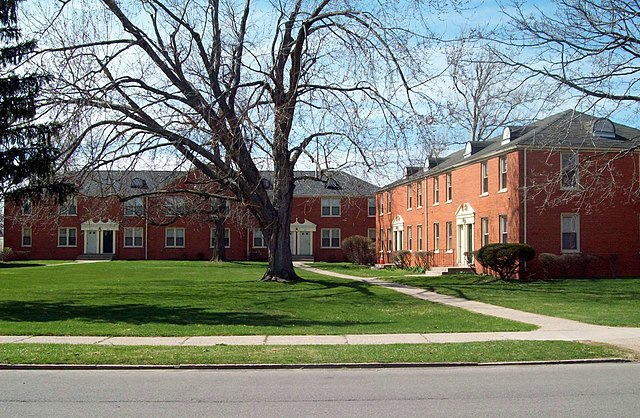Last week, the Antiplanner participated in a Federalist Society debate over housing issues, which can now be downloaded as a podcast. Leading off the debate was Richard Rothstein, an NAACP-affiliated attorney whose book, The Color of Law, argued that zoning and lending has historically discriminated against blacks. His presentation claimed that such discrimination continues in today’s suburbs and his solution was to rezone the suburbs to allow lower-cost housing such as garden apartments and townhouses.
Land-use policies that artificially increase housing shortages force more people to live in apartments when they would rather live in single-family homes. Photo by Pubdog.
Next came Vanderbilt University law professor Christopher Serkin, who said that he personally favored higher density development but noted that most Americans did not. He was followed by Notre Dame law school professor Nichole Garnett, who was also a little skeptical about planning for density.
Of course, the Antiplanner argued that low-density housing was actually the most affordable housing. Except in places where government planners have created artificial land shortages, land is the least expensive part of housing, so garden apartments and townhouses would not save all that much money.
Rothstein correctly pointed to highly discriminatory policies in Federal Housing Administration lending 70 years ago. Those policies, however, have been gone for decades and today many blacks and other minorities are moving into suburban neighborhoods.
Housing doesn’t have to be expensive. In 1890, homebuilders in Chicago sold detached homes with a yard for $1,000, or about $25,000 in today’s money. After World War II, Henry Kaiser in California and Oregon and the Levitt family in New York, New Jersey, and Pennsylvania sold homes for under $10,000, which is around $100,000 in today’s money. In all of these cases, builders were able to construct low-cost housing because they did it on a large scale in what today are called master-planned communities.
Thanks to anti-sprawl laws, master-planned communities such as the Irvine Ranch are no longer possible in California, Oregon, or New Jersey (among other states). The only real solution to housing affordability issues is to abolish those laws, not to destroy existing single-family homes so as to allow the construction of denser apartments that few people want to live in.
I didn’t say so explicitly, but I have to wonder how people who think they favor social justice believe it is equitable to cram low-income people into garden apartments while everyone else gets to enjoy single-family detached homes. Blacks, Hispanics, Asians, and other minorities desire to live in single-family homes as much as whites. Social justice demands correcting the policies that have made housing expensive, not consigning minorities to inferior housing.









In 2018, Gwen and Lorenzo Mitchell a black couple decided last spring to remodel their Denver home they thought a home-equity loan. Having had their home remodeled…
hiring an appraiser. He valued the Home for 405,000.
Dismayed, the couple scheduled a second appraisal. But this time they decided to experiment: Gwen, who is White, remained alone at the home to greet the appraiser. The second appraiser gave the home a value of $550,000 — a $145,000 increase from the first appraisal.
Communities of color were also targeted with risky subprime loans at the height of the housing boom in 2006. Like banks and brokers, home appraisers must abide by the Fair Housing Act of 1968 which outlawed discrimination based on race, religion, national origin or gender. But the industry is coming under increased scrutiny as Black homeowners complain that their homes are being appraised for less than those of their White neighbors.
LazyReader, had a similar case here in town. Turns out the couples appraised value was right in lne for housing price increases with what the purchased the house for. They had purchased it for much less than market rate a few years ago. Maybe they got the lower rate because of their race, too?
These cases pop up in the news from time to time. They’re compelling but – aside from a tiny sampling – they always have a few issues / questions:
a) What was the purchase price?
b) Is the new appraisal price in line with neighborhood gains / loseses in price since the house was purchased? aka did they just plug the last sales price into a formula?
c) What are the conditions that lead to the 2nd appraisal? Did they do anything that would influence / bias the 2nd appraisal? ( answer: yes, by it’s nature always )